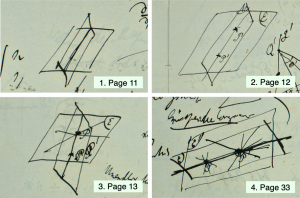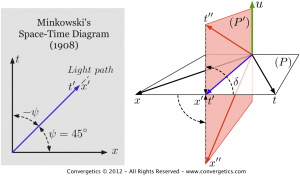Groundbreaking Research Reveals a Multispace Reality, Transforming Our Understanding of the Universe
Reinterpreting Minkowski's Vision
Minkowski's lecture introduced the concept of four-dimensional spacetime, which combines three spatial dimensions with one time dimension into a single continuum known as "spacetime." This revolutionary idea was initially perceived as a mathematical extension of Einstein's special relativity. However, the new article argues that Minkowski's theory was far more radical. He envisioned a multispace reality, where multiple independent spacetimes, he called "worldlines," coexist.
The article explains how Minkowski's cryptic presentation style led to widespread misinterpretation. Physicists and mathematicians of the time, unable to grasp the full implications of his theory, integrated his ideas into the existing framework of relativity. This oversight has persisted for over a century, obscuring the true nature of Minkowski's groundbreaking insights.
Addressing Fundamental Questions
Minkowski's multispace paradigm offers fresh perspectives on several unresolved issues in physics and cosmology. A key concept is the wave-particle duality of quantum mechanics, where particles such as photons exhibit both wave-like and particle-like properties. It also sheds light on the constancy of the speed of light, a principle established by Einstein's relativity, which asserts that the speed of light is the same for all observers, regardless of their relative motion. Additionally, the theory provides insights into quantum entanglement, the phenomenon where particles remain interconnected regardless of distance, challenging classical notions of separability and independence.
Practical Applications and Future Potential
One of the most exciting applications of Minkowski's multispace paradigm is electromagnetic traveling. The article explores the potential for developing technologies that could separate an interplanetary vessel's space from the space of the universe, allowing it to "ride" on the universe's space. This could enable realistic and efficient travel between planets. For instance, an interplanetary vessel with a realistic size traveling at the reasonable speed of 1% of the speed of light will take 5 hours, 3 minutes, and 20 seconds to arrive on Mars. We will just need to develop the technologies (1) to separate the vessel’s space from the space of this universe and (2) to propel the vessel to "ride" on the universe’s space.
The multispace paradigm also prompts a reevaluation of Maxwell's equations, which describe the behavior of electric and magnetic fields. By considering the interactions between multiple independent spacetimes, researchers may uncover new insights into the fundamental nature of electromagnetism and its role in the universe.
Implications for Modern Physics
Minkowski's theory, with its emphasis on multiple independent spacetimes, suggests that reality is based on the interrelationships between these spacetimes rather than between objects within a single spacetime continuum. This paradigm shift has profound implications for modern physics, offering a new framework for understanding the universe's structure and dynamics.
For further information please contact:
Gene Alexandrescu
President
gene@convergetics.org
About the Convergetics Research Center
Convergetics is a unique multidisciplinary science that brings together a broad spectrum of natural sciences to improve our understanding of reality and the universe at different scales.
The Convergetics Research Center is a private research facility with the goal of becoming an interdisciplinary community of researchers. The researchers shares a relentless passion for unraveling the mysteries of reality and its underlying laws of nature.
The Center was founded in 2002 in Montreal, Quebec, Canada, and is led by Gene Alexandrescu, who has dedicated most of his professional career to research and development in engineering.
Gene Alexandrescu
Convergetics Research Center
gene@convergetics.org
Visit us on social media:
X
Other




